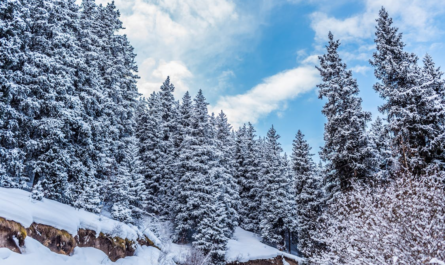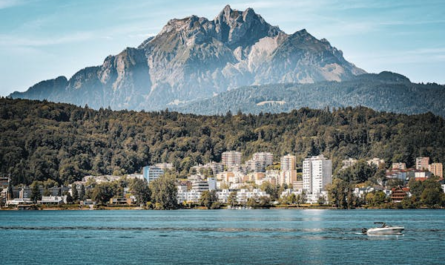Mount Rigi, often referred one of Switzerland’s most renowned and historically significant peaks. Situated in Central Switzerland, it boasts stunning panoramic vistas of the Swiss Alps and the surrounding lakes, drawing travelers from across the globe. However, beyond its scenic charm, Mount Rigi holds a captivating history that stretches back centuries from ancient pathways once traversed by early settlers to its emergence as one of the world’s first tourist destinations. This article explores the rich heritage of Mount Rigi, tracing its evolution through the ages.
1. The Early History of Mount Rigi
The history of Mount Rigi dates back thousands of years, with archaeological evidence suggesting that early human settlements existed in the region. The Celts and later the Romans are believed to have traversed the mountain, using its paths for trade and communication.
- Celtic Influence: Before the Roman conquest of the region, the Celts inhabited Switzerland and used Mount Rigi’s slopes for agricultural and spiritual purposes. Some ancient artifacts, including tools and pottery, have been discovered near the mountain, indicating early human activity.
- Roman Era: When the Romans occupied Switzerland around 15 BCE, they utilized Mount Rigi’s trails for transportation and military strategy. The Romans were known for their road-building expertise, and some of their ancient paths likely contributed to the trails that exist today.
2. Mount Rigi in Medieval Times
During the Middle Ages, Mount Rigi held religious and economic significance. It became a site for pilgrimage and a resource for local communities.
- Religious Importance: The mountain’s high elevation and serene landscape made it an ideal place for monks and hermits seeking solitude and spiritual enlightenment. Several chapels were built in the surrounding areas, with some remnants still visible today.
- Alpine Farming and Trade
The slopes of Mount Rigi were historically used by local farmers for alpine grazing, providing lush pastures for cattle during the warmer months. This pastoral practice played a crucial role in shaping the region’s economy and culture. The high-altitude meadows, with their rich, nutrient-dense grasses, were ideal for livestock, and as a result, the area developed a strong reputation for producing high-quality dairy products, particularly cheese. The famous Swiss cheese varieties, such as Emmental and Gruyère, were made using milk from cattle that grazed on these alpine pastures, contributing to the region’s agricultural identity.
In addition to farming, the region around Mount Rigi became an important hub for trade. The mountain’s network of trails and passes served as vital trade routes, connecting different regions of Switzerland. Merchants and travelers used these routes to transport goods, including agricultural products, textiles, and tools, facilitating commerce across the country. The trade through Mount Rigi’s passes helped foster economic growth and cultural exchange between the Swiss cantons, laying the foundation for the development of regional identities and contributing to Switzerland’s prosperity during medieval times. These agricultural and trade activities helped Mount Rigi establish its prominence long before it became the popular tourist destination it is today.
3. The Birth of Tourism: 17th to 19th Century
Mount Rigi played a pivotal role in the early development of tourism, particularly in the 18th and 19th centuries.
- Early Travelers: By the 17th century, travelers and scholars began to explore Mount Rigi for its stunning vistas. One of the earliest recorded visitors was Swiss naturalist Conrad Gessner, who described the mountain’s flora and fauna in the 16th century.
- The Rise of Health Tourism: In the 18th century, Rigi gained fame for its fresh mountain air and healing properties. Aristocrats and wealthy individuals from across Europe visited the mountain to rejuvenate their health.
- The First Hotels: Recognizing the increasing number of visitors, local entrepreneurs built the first guesthouses in the early 19th century. The Rigi Kulm Hotel, one of the oldest mountain hotels in Europe, opened in 1816 and still operates today.
4. The First Mountain Railway in Europe
One of the most significant developments in Mount Rigi’s history was the construction of the Rigi Railway.
- The Rigi Railway (1871): The Vitznau-Rigi Bahn, built in 1871, became Europe’s first mountain railway. This innovation revolutionized travel to the peak, making it more accessible to tourists. The cogwheel train provided a comfortable journey up the mountain, enhancing Rigi’s appeal as a tourist destination.
- Expansion of the Railway Network: Over time, additional railway lines were added, including the Arth-Rigi Bahn in 1875. These developments further cemented Rigi’s status as a premier travel destination in Switzerland.
5. Mount Rigi in the 20th Century: The Golden Age of Tourism
The 20th century saw continued growth in tourism, with Mount Rigi becoming a favorite among both Swiss citizens and international travelers.
- Tourism Boom: After World War II, Switzerland experienced an economic revival, and leisure travel became more popular. Mount Rigi benefited greatly from this boom, with increased railway traffic and the construction of modern hotels and restaurants.
- Winter Sports and Recreation: While traditionally a summer destination, Rigi also became a popular location for winter sports such as skiing and snowshoeing. The Swiss government invested in infrastructure to support these activities.
After World War II, Switzerland experienced a strong economic resurgence, leading to a rise in disposable income and a growing interest in leisure travel. This period marked a tourism boom for Mount Rigi, as more people sought scenic getaways in the Swiss Alps. The increased popularity of the mountain led to a significant rise in railway traffic, prompting improvements in transportation infrastructure, including the modernization of the Rigi Railway to accommodate more passengers. To cater to the growing influx of visitors, new hotels and restaurants were built, offering modern amenities and enhancing the overall tourism experience.
While Mount Rigi had long been known as a summer retreat for hiking and sightseeing, its potential as a winter sports destination also began to emerge during this time. Skiing, snowshoeing, and other cold-weather activities attracted adventure seekers, encouraging the Swiss government to invest in facilities that could support year-round tourism. Ski lifts, designated trails, and winter lodges were developed to accommodate winter sports enthusiasts, transforming Rigi into a versatile destination. These investments not only boosted the local economy but also cemented Mount Rigi’s reputation as a premier location for both summer and winter recreation.
6. Modern-Day Mount Rigi: A Blend of Tradition and Innovation
Today, Mount Rigi continues to be one of Switzerland’s top tourist destinations, seamlessly blending history, nature, and modern conveniences. Sustainable tourism efforts have been prioritized, with the railway system transitioning to greener energy sources and hiking trails being carefully maintained to preserve the natural landscape. Visitors can indulge in a variety of cultural and recreational activities, from breathtaking hikes and relaxing spa experiences to events like the annual “Rigi Schwinget,” a traditional Swiss wrestling competition that draws large crowds. Embracing technological advancements, Mount Rigi now offers virtual tours and real-time weather updates, ensuring a more interactive and convenient experience for travelers.
Mount Rigi’s transformation from an ancient trading route to a globally renowned tourist destination highlights its timeless charm and significance. From its historic trails and groundbreaking railway to its influence on Switzerland’s tourism industry, Rigi has continually captivated visitors with its stunning scenery and deep cultural roots. With ongoing efforts in sustainable tourism and modern innovations, this iconic mountain is poised to remain a beloved destination for future generations, preserving its natural beauty while enhancing the visitor experience.



